In the 1970s in the UK, the best day of my childhood year came on November 5th. Using earnings from my newspaper delivery round I would secretly buy fireworks, mostly bangers, air bombs and rockets, but a few jumping jacks too. These would all be hidden from my parents inside an empty box marked ‘Chemistry Set’ that they had bought me one Christmas.
For weeks beforehand all the boys of the neighbourhood would build massive bonfires, scavenging combustible material wherever we could. In good years we could start with a three-piece furniture set then build over it. That meant we could hang out inside the fire during the weeks leading up to the great day, a vital task as other gangs would sneak in and set fire to our pile, or steal the best bits.
If we could find an old pram we would stuff old clothes with grass and make a life-sized mannequin, an effigy of Guy Fawkes. We knew his name, of course, but were completely oblivious to the monstrousness of the idea that we were planning to burn the effigy of a catholic who had attempted to kill our king. We would take this guy and go door-to-door begging for money. Any profits went into buying more fireworks. The night itself was huge. Neighbours would open up their houses for distributing hot dogs, bonfire toffee and toffee apples. Adults would stand around chatting while we filled our pockets then ran off into the night to experiment with pyrotechnics. Bangers would be tied to rockets and fired in random directions. Jumping jacks could be lit inside crowds to great effect. Miraculously we only ever caused psychological damage, but in those days fireworks were much less powerful than now. Climax came as the guy caught fire and collapsed into the inferno. Next morning we would head up there before school and cook spuds in the embers.
Over the years bonfire night became gentrified. People started going to firework displays where you could guarantee that the people throwing the explosives were not throwing them at you. Things became so sedate that a lot of people gave up on it. Halloween, meanwhile, grew in stature, but in the UK this is geared towards smaller children who have yet to be given chemistry sets.
In travel you sometimes stumble on a celebration or festival that remains intact, relatively undisturbed by the efforts of marketing and sales teams. Perhaps because I regret the passing of November 5th, the Guy Fawkes night of my youth, I love those chance encounters.
Driving through the Mexican state of Puebla in 2016, I came to the village of Huaquechula. I knew it was The Day of the Dead and I thought I’d seen all that before: masks, bejewelled skulls, face paint. What I hadn't realised was that the carnival of the grotesque I had witnessed in Mexico City was a new phenomena. It had only started after the James Bond film, Spectre, depicted a Day of the Dead fiesta in the city and the local population decided it was a fun idea. The real vernacular, indigenous event happens out in the countryside - in villages like Huaquechula.
Every family that has suffered a bereavement in the previous year keeps open house, inviting all passers-by to enter and enjoy their hospitality.
And that hospitality can be on an epic scale, depending on the resources of the family.
Inside the house the family keep a vigil all night long and the spirit of the deceased comes to visit during the small hours. It is vital to offer them tasty morsels and favourite drinks too.
“Her soul came in the night and drank a little cerveza michelada,” the old man told me about his wife who had died seven months earlier, pointing to a half-empty glass of salted beer on the elaborate altar he had constructed.
The altars are intricate and detailed homages to the deceased, often featuring their possessions and always a photograph.
By afternoon the population are ready for the big event: the flight of the eagles. In this tradition five men dressed as eagles climb a huge tree trunk specially prepared for the day.
Once at the top, they carefully wind ropes around the crown of the pole, tying the other end to their ankles. This takes a long time and the leader stands on the summit singing and banging a drum.
When they are ready, the drumming gets faster and the mood in the crowd changes.
Then they fall head first to earth, spinning around the pole which slowly lengthens the lines until they hit the ground - hopefully not too hard.
The tradition is a pre-conquest one, and long may it last, hopefully without attracting the attention of big business.
Can I ask a favour? If you enjoy the stories and photos, tell someone who you think might like it too? New subscribers help keep me enthusiastic and ready to dig deeper into the archives!






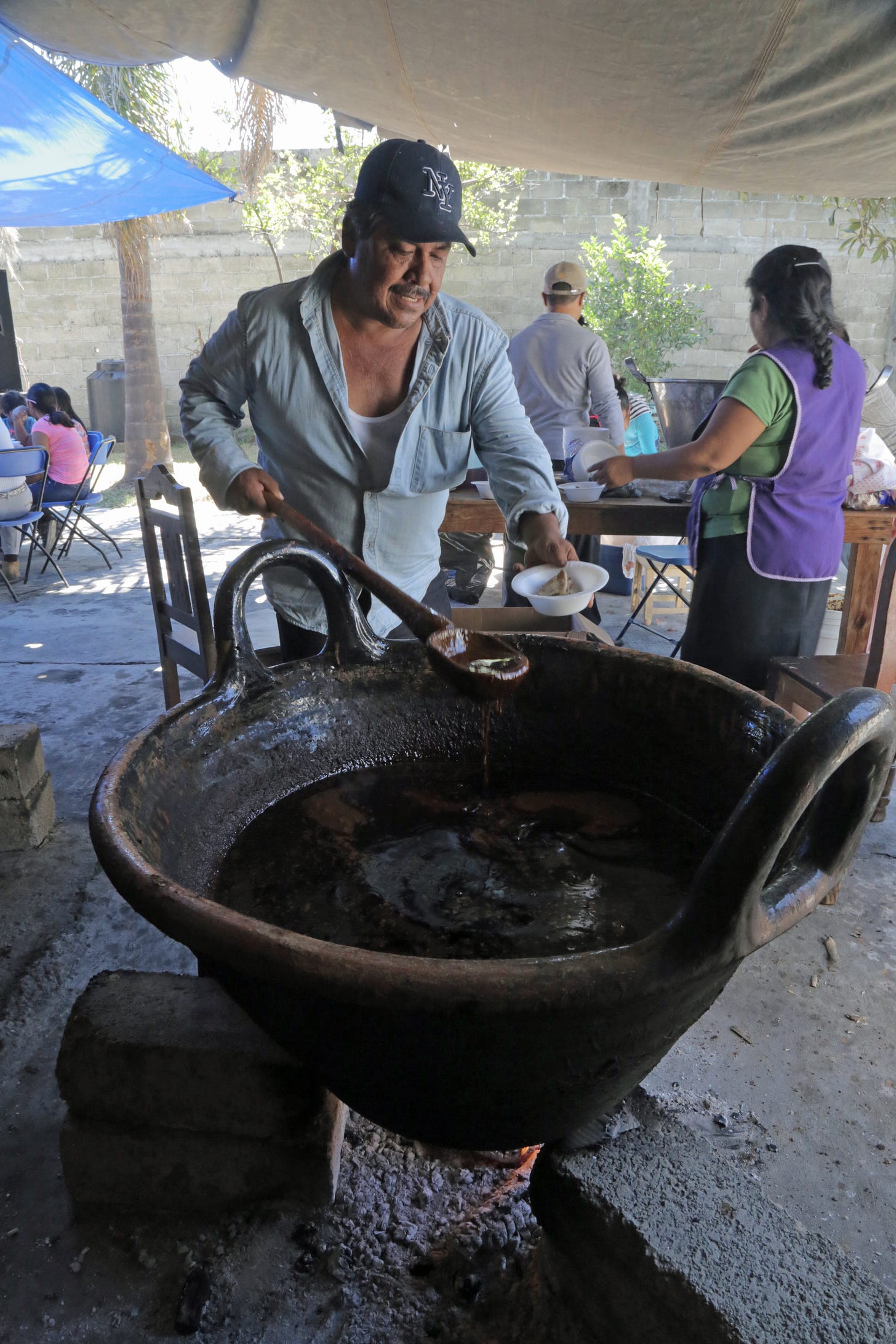
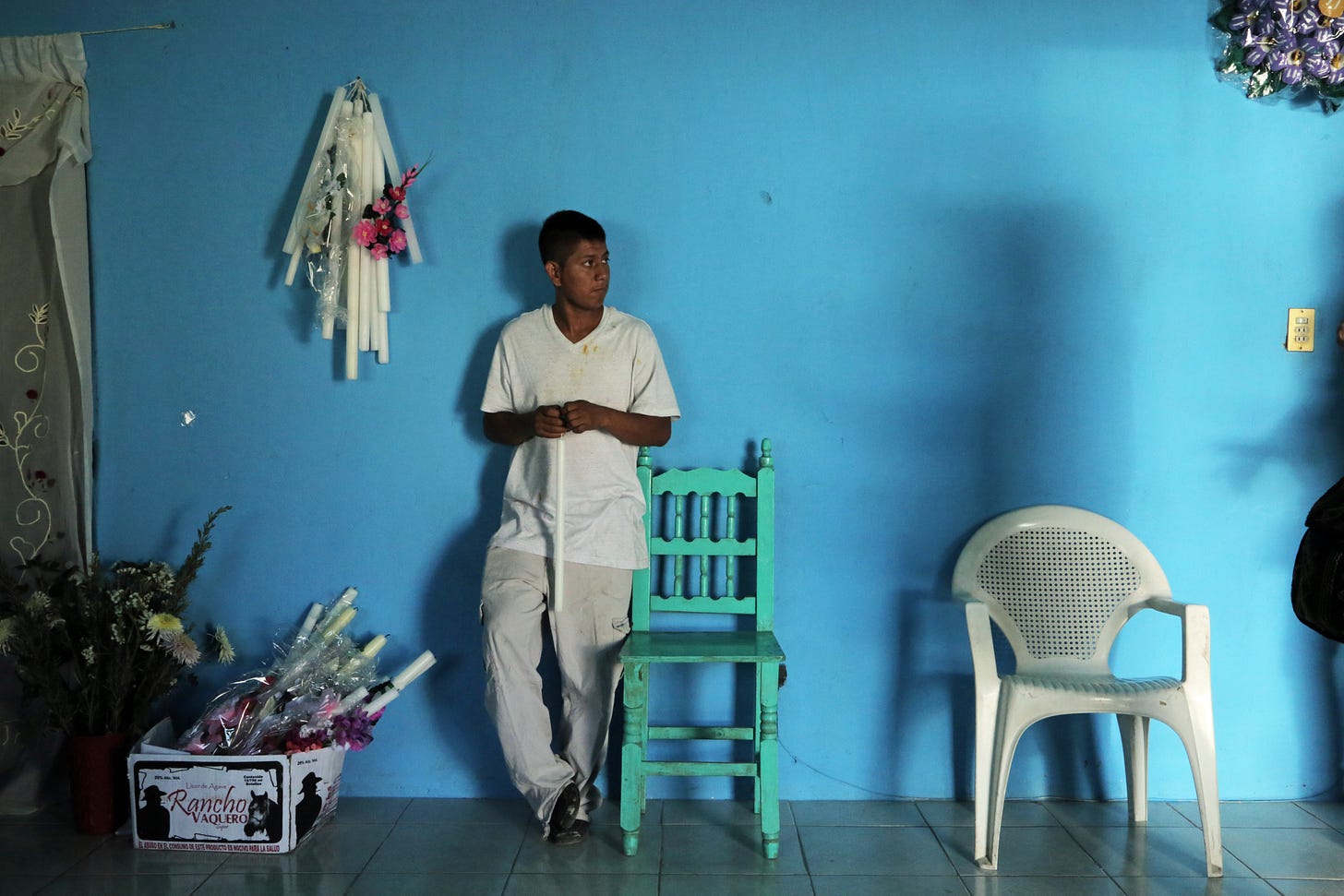
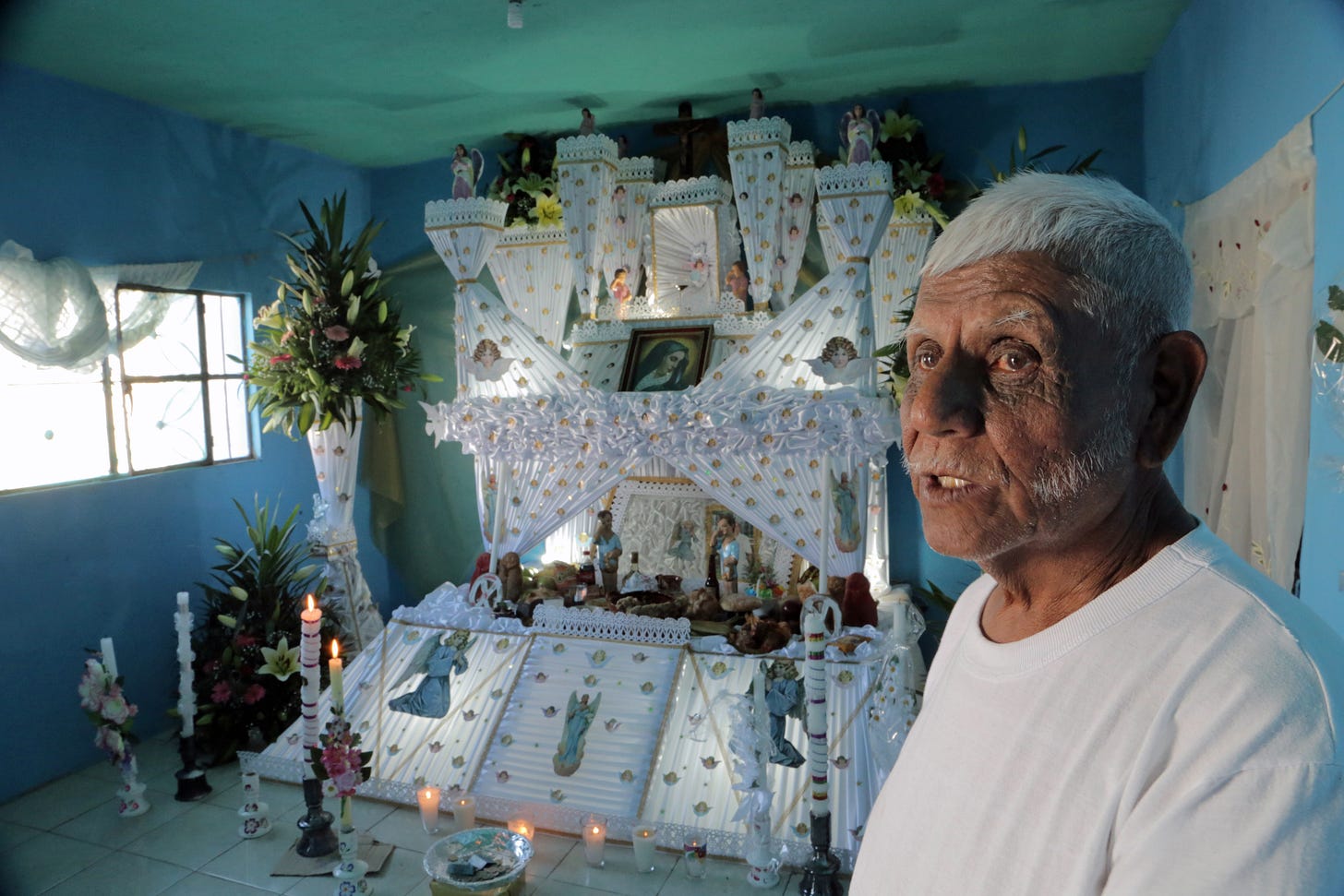

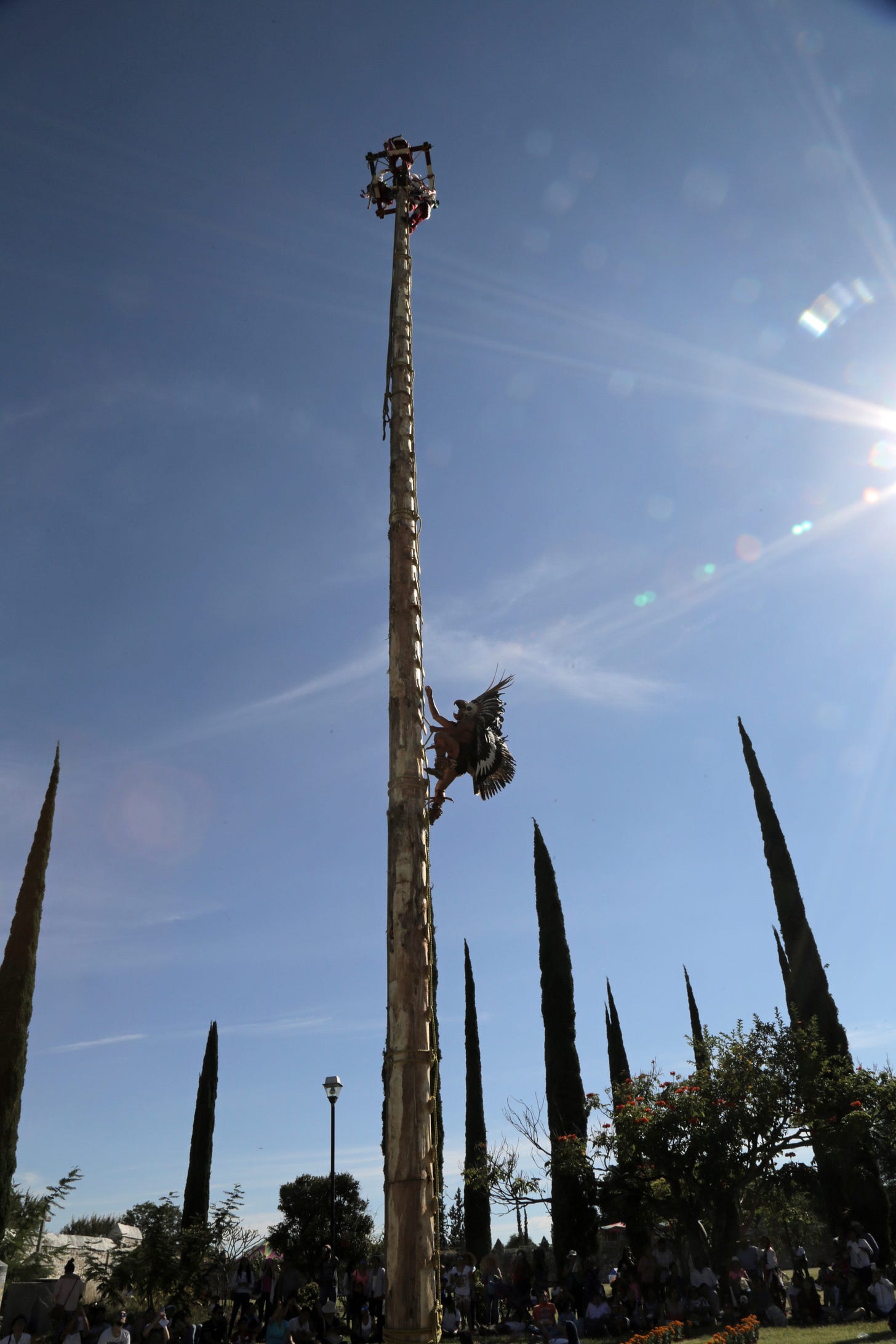

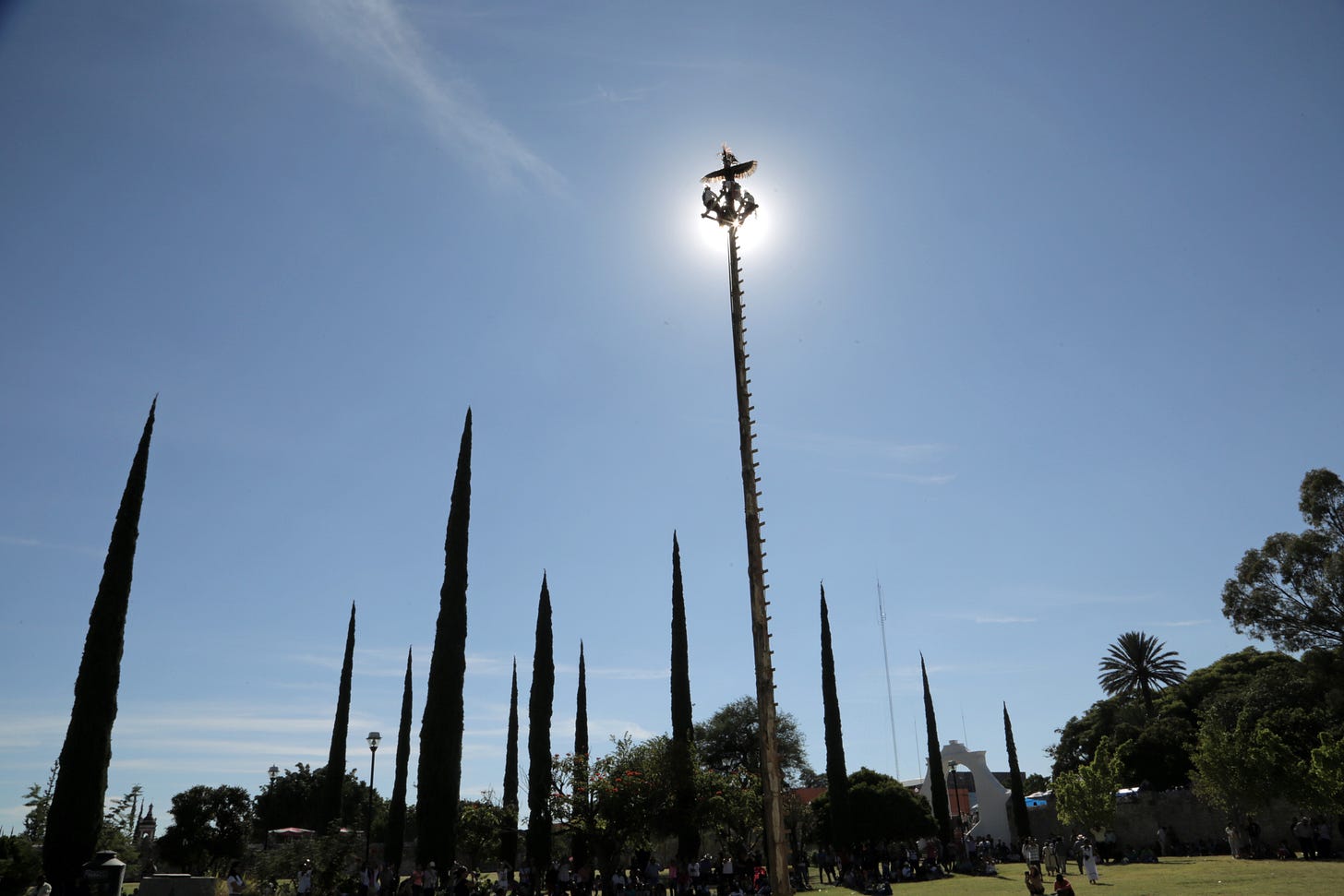

You just described my childhood in the 70s to a T. My friends and I started the bonfire building in late August. An old piano and a tree stump were always a good additions to the three piece suite. Sometimes the embers would still be smouldering a week later!
I am so happy you are back!
Although not the same as gaining digital (numerical) followers, I speak about your stories weekly to friends and family, sometimes even reading them out loud. It makes for great conversations and lively discussions. If you ever feel a lack of “likes” and “followers”, it is because you are not seeing the true human impact happening halfway across the world. Readership metrics are not always what they seem. Please keep digging through the archives! I’m sure you have more fans than you realize.